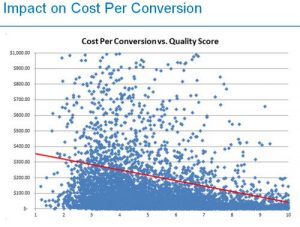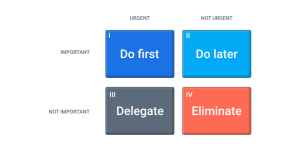
If your sales teams are getting small pilot projects but never getting any bigger deals, your land and expand strategy is failing.
Landing small projects is a waste of your sales team’s time unless they can grow these contacts into bigger, more rewarding deals. To do this, you need a robust land and expand sales strategy.
By demonstrating your value and solving bigger business needs for your prospects, you can deliver positive business results for your clients while growing your own revenue.
Gartner research found that more than 65 percent of technology buyers are more likely to buy from their vendors when the value of their products and services are clear.
This supports the fact that land and expand strategies are critical to hitting your revenue goals and growing your business.
But what if you have a land and expand sales strategy and it’s not delivering results?
Instead of giving up on your land and expand sales strategy, learn more about the five key challenges that may be crippling your land and expand efforts and how you can solve them:
5 Reasons Why Your Land and Expand Sales Strategy Isn’t Working
No Defined Target
Sales reps can’t sell to everyone. They have to be equipped with specific knowledge of the companies and people they’ll be targeting or they’re just wasting time.
Once your team knows exactly who they’re targeting, they have to understand their prospect’s pain points. If not, they won’t be able to create the message that speaks to each specific person you’re targeting.
A one-size-fits-all message doesn’t work. You have to make sure the sales message highlights the value that is important to the buyer’s specific pain points. When you’re landing and expanding, this may change given the prime stakeholder of the opportunity.
Your sales teams needs to understand who owns the problems that your products and solutions can address. It’s not enough to just understand the company, it’s critical to understand the internal structure so your reps have a clear understanding of who the right person is.
Unclear Sales Messaging
If your sales reps don’t know the value of your products and services, how can you expect your prospects to understand what you can do for them?
Your sales team has to understand exactly what benefits your products and services offer or they’ll never be able to demonstrate the value you’re offering. Understanding your company’s value is key to creating a clear, consistent message that every sales rep can use.
To help define your message, ask these four questions:
- What problems do I solve for my customers?
- How do I specifically solve these problems?
- How do I do it differently than my competitors?
- What’s my proof?
Selling based on technical specs won’t get you the big deals you want. Every member of your team must be focused on selling the value of your products and services. By presenting solutions, instead of just products, you can open the door to the big record-setting deals you’re looking for.
You’re Lacking The Right Process and Tools
Another common issue with land and expand sales strategies is that you have an overly complex set of processes that make it difficult for the sales team to follow. If your team thinks the process you’ve outlined is slowing them down and keeping them from making sales, they’ll go around it.
Similarly, if there’s no clear process, each sales rep will create their own process, giving you little to no visibility into what they’re doing while wasting their time on activities that don’t drive revenue.
Creating a process that promotes a relationship between customers and your sales team will increase sales effectiveness and drive the sustained sales you need.
The wrong tools or a lack of tools are another reason that land and expand strategies fail. Sales teams need the right tools that support and streamline the overall process and messaging without getting in the way of their sales strategy.
Incumbent Has The Advantage
It’s always difficult to try to create a new relationship with a prospect when they’re already working with another company. You’re working against that established relationship where that incumbent account team already understands their business and what solutions they’re seeking.
Taking business from an incumbent requires a sales team that understands differentiation in a way that has meaning to the buyer. How are you different from the competition? What about that difference would move a buyer to a different solution.
Your Solution Is Labeled The ‘One-Off’ Solution
It’s important when you’re working on your land and expand sales strategy that you don’t get labeled as the “one-off” solution. Making contacts beyond the scope of your first pilot project or roll-out is key to avoiding getting pigeonholed in just one area. Getting buy-in needs to go beyond the business owner and expand into other key decision-makers in the company. CEOs, CFOs and CIOs are all people that you should understand the full value your products and services are bringing to their company.
Even when you’re able to get an “in” at the company with a pilot project, it can be difficult to land and expand beyond this point. Pilot projects are often seen as not aligned to the broader business strategy. Moving from a pointed project to an enterprise solution is difficult unless there is a maniacal focus on the business value of your solution.
It’s critical that you understand how the greater pain points and company initiatives so you can sell your products and services as the solution. By fitting this into your sales messaging, you can avoid getting stuck as the “one-off” solution.
Don’t let these common sales issues cripple your land and expand sales strategy. Enable Your Reps To Land And Expand.
Business & Finance Articles on Business 2 Community
(85)









